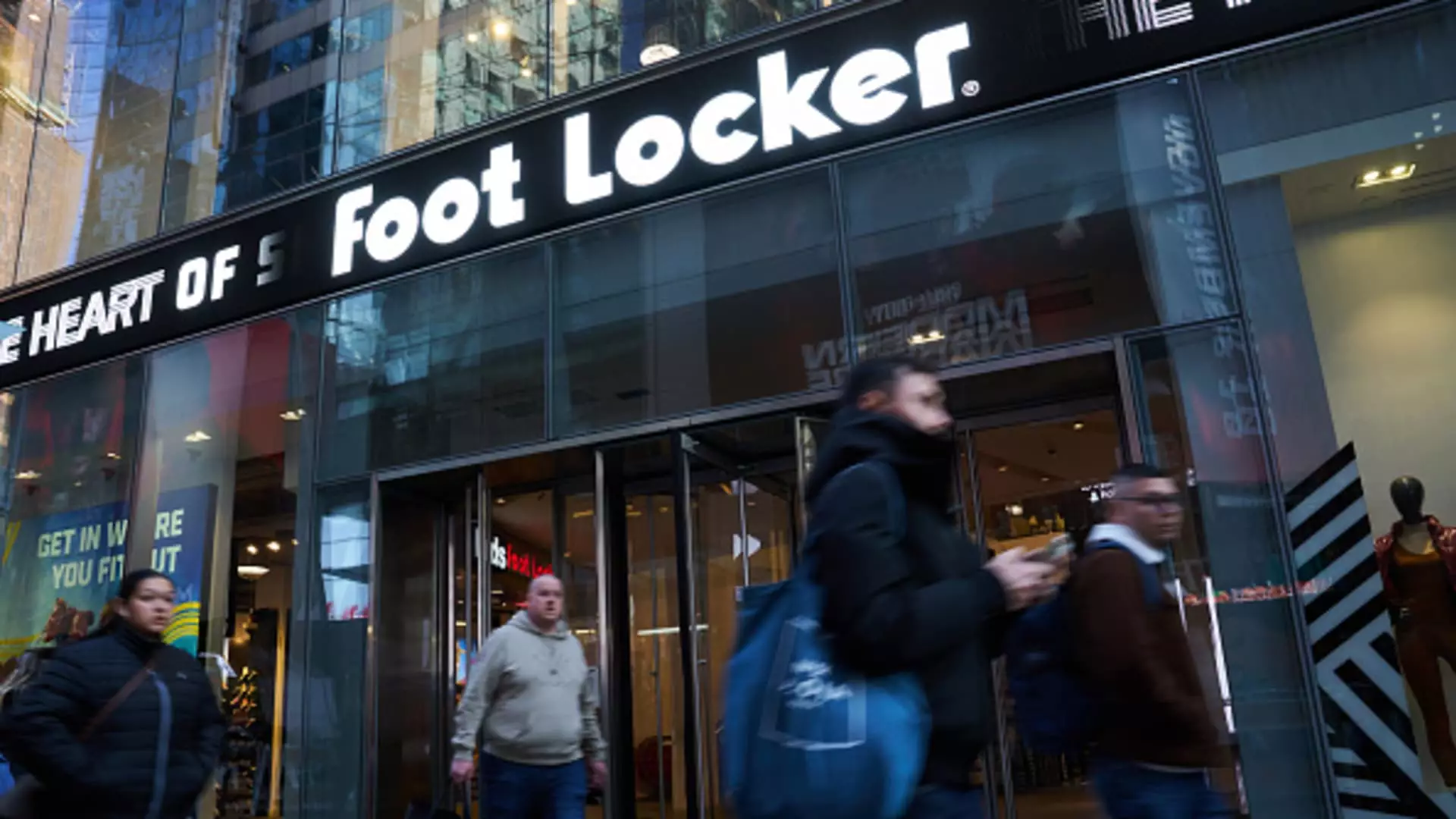Foot Locker recently reported that comparable sales grew for the first time in six quarters, showcasing the success of its efforts to refresh its stores and enhance the customer experience. The sneaker company recorded a 2.6% increase in same-store sales during its fiscal second quarter, surpassing analysts’ expectations of a 0.7% uptick. Additionally, the company’s gross margin expanded for the first time in over two years. Despite these positive trends, Foot Locker’s shares took an 8% hit in premarket trading, reflecting a disconnect between financial performance and investor sentiment.
Foot Locker’s financial results for the quarter pleasantly surprised Wall Street analysts. The company reported a loss per share of 5 cents adjusted, outperforming the expected 7 cents loss. Revenue for the quarter stood at $1.90 billion, slightly above the anticipated $1.89 billion. Although Foot Locker experienced a loss of $12 million, or 13 cents per share, in the quarter, the company’s sales rose to $1.90 billion, marking a 2% increase from the previous year’s $1.86 billion.
CEO Mary Dillon, who took the helm two years ago, spearheaded a turnaround strategy dubbed “The Lace Up Plan.” Under her leadership, Foot Locker aimed to revamp its store fleet, build stronger partnerships with key brands like Nike, and enhance customer engagement. The company’s commitment to innovation and adaptability in a rapidly evolving retail landscape has been a cornerstone of its recent success.
Store Upgrades and Strategic Partnerships
Foot Locker invested $275 million in upgrading its stores, with plans to remodel two-thirds of its fleet by fiscal 2025. In collaboration with Nike, the company developed new megastores in prominent locations like New York City and Paris. The partnership focused on leveraging consumer insights to drive mutual business growth, rather than simply focusing on sales figures. Dillon’s emphasis on combining retail expertise with market trends has paid off in driving Foot Locker’s performance.
To streamline operations and improve profitability, Foot Locker announced the closure of its stores and e-commerce operations in select regions. The company also planned to shift its global headquarters from New York City to St. Petersburg, Florida, by late 2025. The strategic relocation aimed at enhancing collaboration among teams while reducing costs. Dillon highlighted the decision’s financial benefits, emphasizing the importance of fostering teamwork and innovation within the organization.
Amidst economic challenges like inflation and high interest rates, Foot Locker’s focus on enhancing the customer experience has resonated with consumers. The company’s ability to drive sales growth without imposing additional financial burdens on its core customer base is indicative of its customer-centric approach. Dillon’s dedication to serving customer needs and adapting to market dynamics has positioned Foot Locker as a standout player in the retail industry.
As Foot Locker continues to improve its stores, products, and online presence, the company remains optimistic about its future prospects. Despite prevailing challenges in the retail sector, Foot Locker’s strategic initiatives are gaining momentum. Dillon’s visionary leadership and commitment to driving innovation have propelled Foot Locker ahead of its competitors. The company’s results reflect a successful transformation under Dillon’s leadership, setting a strong foundation for sustained growth in the coming years.


Leave a Reply